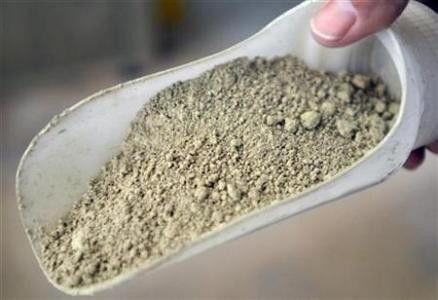DOE releases rare earth minerals strategy

The US Department of Energy has released a critical materials strategy based on extensive research by the Department during the past year, examining the role of earth metals and other materials in the clean energy economy.
Each day, researchers and entrepreneurs across the United States are working to develop and deploy clean energy technologies that will enhance our security, reduce carbon pollution and promote economic prosperity. This strategy is an important step in planning for growing global demand for clean energy products that will help strengthen the U.S. economy and create jobs, said Secretary of Energy Steven Chu.
Ensuring reliable access to critical materials will help the United States lead in the new clean energy economy.
The strategy analyzes fourteen elements, identifying five rare earth metals (dysprosium, neodymium, terbium, europium and yttrium) as well as indium as most critical based on importance to clean energy technologies and supply risk, Department of Energy said.
The study also explores eight policies and program areas that could help reduce vulnerabilities and address critical material needs, including research and development, information-gathering, permitting for domestic production, financial assistance for domestic production and processing, stockpiling, recycling, education and diplomacy.
The report also promised to follow-up with a more complete U.S. rare-earth development strategy by the end of 2011.
The DoE's new strategy closely reflects the direction laid out in the legislation on rare earths my Committee passed through the House last September. Our bipartisan bill would provide ready-made authority for many elements of DoE's strategy, said House Committee on Science and Technology Chairman, Bart Gordon about a bill, H.R. 6160, that has passed in the House, but awaits debate in the Senate.
I've argued for greater international collaboration on issues like this [too] so I commend the Department for making this an important part of its effort going forward.
The study also points out three point strategies to proactively address the availability of rare earths and other strategic materials required for the clean energy economy. The strategy is to globalize supply chains for strategic materials, develop substitutes and promote recycling, re-use and more efficient use of strategic materials, to get more economic value out of each ton of ore extracted and refined.
Last month, China suspended shipments of the mineral to EU and US in October, media reports stated. The suspension came after there were indications that the U.S. would investigate if China was violating World Trade Organization rules by subsidizing clean energy exports and limiting clean energy imports.
China mines about 90 percent of the world's rare earth minerals - which is a collection of seventeen chemical elements and is used to various technological devices, cellular phones, high performance batteries, flat screen televisions, green energy technology, and are critical to the future of hybrid and electric cars, high-tech military applications and superconductors and fiber-optic communication systems.
China has been reducing export quotas of rare earth minerals for the past few years, citing environmental concerns. However, Wang Caifeng, who is in charge of setting up the China Rare Earth Industry Association, stated that China might slightly raise the production cap and export quota next year.
China, which mines more than 90 percent of the world's rare earth, has exported 6,000 tons, or 49.8 percent, of its total rare earth to Japan, representing 167 percent rise year on year, according to China's Ministry of Commerce.
© Copyright IBTimes 2024. All rights reserved.





















